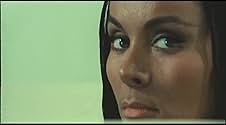Some films are hard to judge, especially something like this, that may be very close to what Welles intended, but never finished and never really seemed to be really satisfied with (see also the documentary about Welles from 2018, which is really good). Now there are things in here that may seem redundant to some or annoying. Or even pretentious to some extend. If that rings true to you or not, it doesn't mean you are right or wrong, one way or the other. It just means you have feeling and maybe knowledge and that's why you lean to a particular way or side.
Having written all that, I am surprised by the amount of nudity that made it into the film. I'm also surprised about the film depicting scenes being shot "in real time" with off commentaries by the director, with different cameras, cuts and all that. Now obviously we are taking creative liberties here and it's supposed to be heightened. It's to prove a point or even points. So in a way there is more to the film than meets the eye. You have to approach this movie with a certain mindset.
If you do that, you may be able to see more than some others. But if you don't you'll probably be bored. Whatever your stance on this is and it will be dividing, you cannot call this an easy movie to watch. Some probably will watch it multiple times and cherish it's commentary and behind the scenes insights as much as its psychology. Others will just sneer at the mention of the title. In a way I'd say that would make Welles happy after all ...


























